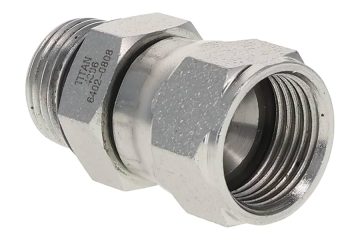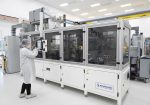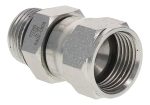Medical Contract Manufacturing Solutions That Improve Quality and Speed

In the intricate ecosystem of healthcare innovation, medical contract manufacturing functions as a vital symbiotic relationship between product developers and specialised production facilities. Like the complex interdependencies observed in nature, this partnership thrives when each organism contributes its evolved strengths, creating outcomes superior to what either could achieve independently.
The Adaptive Advantage of Specialisation
Evolution teaches us that specialisation confers survival advantages. In the medical device industry, this principle manifests through medical contract manufacturing relationships that allow innovators to focus on what they do best whilst production specialists optimise manufacturing processes. The division of labour, so elegantly demonstrated in ant colonies and coral reefs, proves equally effective in industrial contexts.
Medical device companies face a fundamental choice: build internal manufacturing capacity or partner with established facilities. The former requires substantial capital investment in cleanrooms, equipment, validation protocols, and trained personnel. The latter provides immediate access to these resources without the evolutionary lag of developing them from scratch.
Quality as a Systematic Imperative
Quality in medical manufacturing resembles the precision found in biological systems. A single misfolded protein can cascade into system failure. Similarly, a minor deviation in medical device production can compromise patient safety. Medical contract manufacturing facilities address this through layered quality systems that mirror nature’s redundancy.
These facilities operate under regulatory frameworks as exacting as any natural selection pressure. ISO 13485 certification demonstrates systematic quality management. FDA registration and compliance with 21 CFR Part 820 ensure adherence to good manufacturing practices. European MDR requirements add additional layers of verification.
“Quality cannot be inspected into a product,” observes a quality director at a Singapore medical contract manufacturing facility. “It must be designed into every process step, much as genetic code determines cellular function.”
The implementation includes:
- Environmental controls that maintain cleanroom classifications from ISO 7 to ISO 5, creating conditions as precisely regulated as a living cell
- Material traceability systems that track components from supplier certification through final device assembly
- Statistical process control that monitors production parameters continuously, identifying variation before it produces defects
- Validation protocols that establish and verify manufacturing processes perform consistently across batches
- Risk management systems following ISO 14971 principles to identify and mitigate potential failure modes
Speed Through Established Infrastructure
Time represents a critical variable in medical device development. Patients wait for innovations. Competitors develop parallel solutions. Regulatory windows open and close. Medical contract manufacturing accelerates timelines by providing infrastructure that required years to establish.
Consider the complexity of setting up sterile manufacturing. A company building its own facility must design cleanrooms, install filtration systems, validate environmental controls, train personnel in aseptic techniques, and demonstrate process capability. This sequence extends across months or years. Partnering with an established medical contract manufacturing facility compresses this timeline to weeks.
Singapore’s Strategic Position
Singapore has evolved into a centre for medical contract manufacturing through deliberate cultivation of competitive advantages. The nation’s regulatory alignment with major markets reduces validation redundancies. Its workforce brings technical literacy and quality consciousness. Infrastructure supports sophisticated manufacturing without the constraints found in less developed regions.
“We observe clients choosing Singapore not from convenience but from calculated assessment of risk and capability,” notes a business development manager. “The regulatory environment, talent pool, and quality infrastructure create conditions that minimise variables.”
The geographic position offers additional benefits. Proximity to Asian markets reduces logistics complexity. Time zone positioning facilitates communication with both European and American partners. Political stability and intellectual property protection provide security for proprietary technologies.
Material and Process Capabilities
Modern medical contract manufacturing facilities offer process diversity comparable to ecosystem biodiversity. Injection moulding produces polymer components with precise tolerances. Metal injection moulding creates stainless steel and titanium parts for surgical instruments. Assembly operations integrate components under controlled conditions. Sterilisation services using ethylene oxide, gamma radiation, or steam autoclaving ensure product safety.
Surface treatments modify material properties. Plasma cleaning activates surfaces for bonding. Laser marking provides permanent traceability. Ultrasonic welding joins thermoplastic components without adhesives. Each capability represents years of process development and validation.
Documentation and Regulatory Support
The paperwork accompanying medical device manufacturing rivals the information density of genetic code. Device master records document every design specification. Manufacturing batch records capture production parameters. Quality system documentation demonstrates compliance with regulatory requirements.
Medical contract manufacturing partners maintain these systems as core competencies. Technical writers create instructions following human factors principles. Quality assurance specialists review documentation for completeness and accuracy. Regulatory affairs professionals interface with notified bodies and regulatory agencies.
Scaling Production Efficiently
Biological systems scale elegantly, adding cells without redesigning fundamental architecture. Medical contract manufacturing similarly accommodates growth from pilot production through commercial volumes. Initial builds validate design and process compatibility. Production ramps incrementally, each increase building on established capabilities.
Facilities design workflows to accommodate multiple products simultaneously, segregating materials and processes to prevent cross-contamination. Production scheduling optimises equipment utilisation whilst maintaining flexibility for customer requirements. Inventory management systems ensure component availability without excess working capital.
Risk Mitigation Through Partnership
Every biological relationship involves risk assessment and mitigation. Medical contract manufacturing partnerships require similar evaluation. Due diligence examines facility capabilities, quality history, financial stability, and customer references. Site audits verify systems match claims. Pilot runs demonstrate practical capability beyond theoretical promises.
Successful partnerships balance control with trust. Device companies retain design ownership and regulatory responsibility whilst delegating production execution. Clear communication protocols and defined interfaces prevent misunderstandings.
For medical device innovators navigating the complexity of regulated manufacturing, strategic partnerships with capable medical contract manufacturing facilities accelerate development whilst maintaining the quality standards that patient safety demands.

















